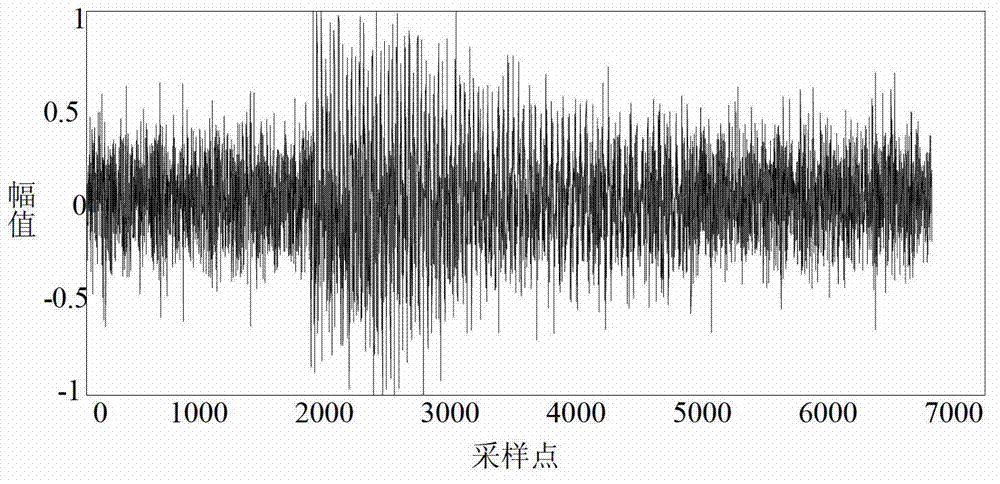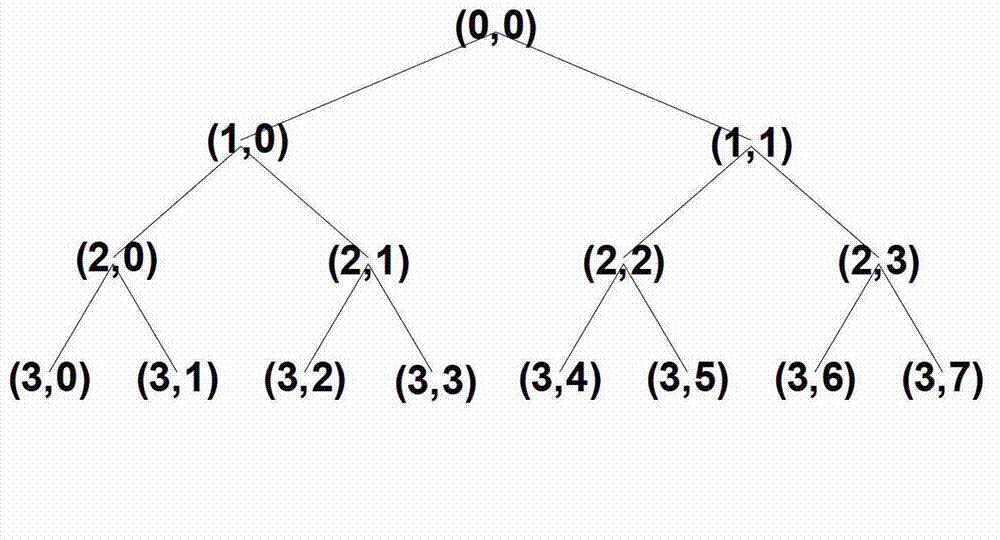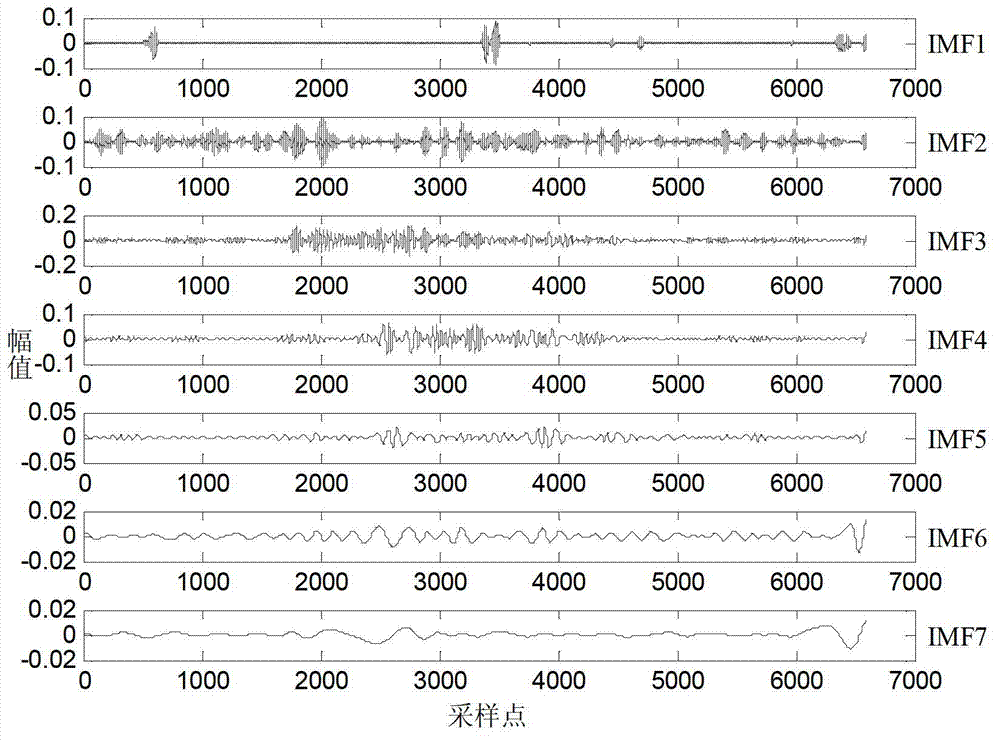Low signal to noise ratio voice endpoint detection method based on time-frequency instaneous energy spectrum
An instantaneous energy spectrum, endpoint detection technology, applied in speech analysis, speech recognition, instruments, etc., can solve the problems of modal aliasing, unsatisfactory voice endpoint accuracy, and weak anti-noise ability, to improve stability, The effect of reducing program running time and improving accuracy
- Summary
- Abstract
- Description
- Claims
- Application Information
AI Technical Summary
Problems solved by technology
Method used
Image
Examples
Embodiment Construction
[0021] Below in conjunction with accompanying drawing, the present invention will be further described, and the concrete steps of the inventive method are:
[0022] Step (1) For the noisy speech signal under the background of strong noise (Such as figure 1 shown) plus Hamming window processing. Use the db3 wavelet basis function in Daubechies to perform three-layer wavelet packet decomposition on the windowed noisy speech signal, and the schematic diagram of the wavelet packet decomposition binary tree is as follows figure 2 shown. Reconstruct the decomposed result to obtain the reconstruction signal, denoted as , and the corresponding frequency bands are ,in for the minimum frequency resolution, , is the sampling frequency.
[0023] Step (2) will reconstruct the obtained low frequency component signal Perform adaptive EMD decomposition (the first 7 IMF components such as image 3 shown), thus obtaining a finite number of IMF components and residual signal ...
PUM
 Login to View More
Login to View More Abstract
Description
Claims
Application Information
 Login to View More
Login to View More - R&D
- Intellectual Property
- Life Sciences
- Materials
- Tech Scout
- Unparalleled Data Quality
- Higher Quality Content
- 60% Fewer Hallucinations
Browse by: Latest US Patents, China's latest patents, Technical Efficacy Thesaurus, Application Domain, Technology Topic, Popular Technical Reports.
© 2025 PatSnap. All rights reserved.Legal|Privacy policy|Modern Slavery Act Transparency Statement|Sitemap|About US| Contact US: help@patsnap.com



